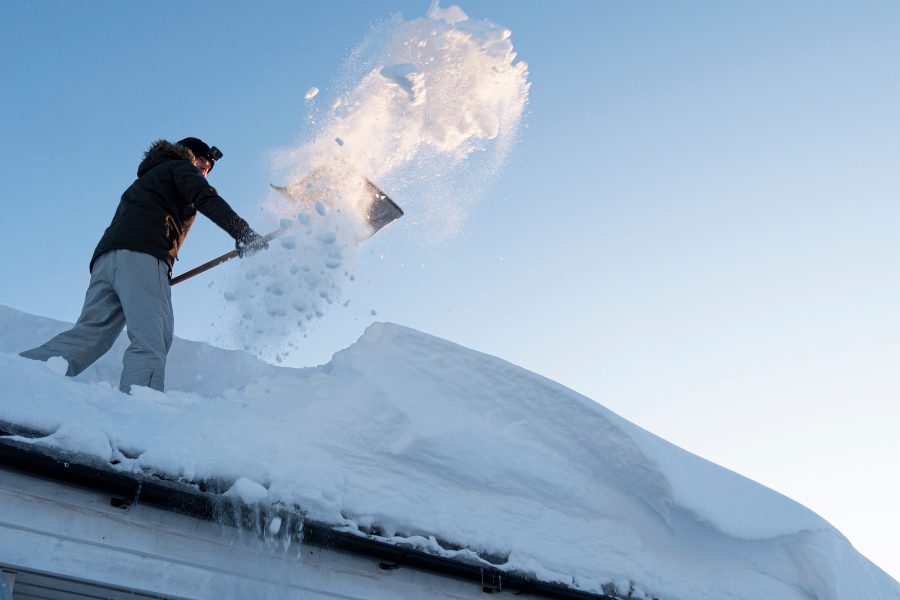Summary:
- National Research Council of Canada suggests a minimum roof snow load is 21 pounds/sq ft.
- Alberta’s building codes suggest a minimum 22 pounds/sq ft, accounting for 4+ feet snow drifts.
- Ice buildup in Alberta poses a risk due to freeze/thaw cycles.
- Alberta roofs designed to hold 22lbs/sq inch, equivalent to 4.5 feet high snow drift or 2.5 feet of compressed snow.
When I was young I used to sneak out my bedroom window and sit on my roof. My Dad (Al Perzylo, original founder of Big 5) would have been mortified if he knew, but it’s probably part of the reason I wound up getting into the family business.
While on the roof I used to contemplate things like “I wonder if I can jump to the house next door” and “what would happen if I fall”.
One cold November night, and after a particularly heavy snowfall, I wondered “how much snow can the roof hold before it collapses?”. Today’s the day I finally answer that question!
DETERMINING HOW MUCH WEIGHT A ROOF CAN HOLD
According to the National Research Council of Canada, the minimum snow load a roof is required to handle is 21 pounds per square foot (or 1 kilo Pascal). Alberta’s building codes require a minimum of 22 pounds per square foot (or 1.06 kolo Pascals).
For safety reasons, we build roofs that meet or exceed these codes. We ensure that our eavestrough and downspouts are properly installed/sloped to facilitate quick drainage of water and snow runoff.
How Heavy is Snow?

- 1 foot of freshly fallen snow equals roughly 5 pounds per square inch of load.
- 5 inches of compressed/packed snow is equal to roughly 5 pounds per square inch of load.
- 1 inch of water is equal to roughly 5 pounds per square inch of load.
Alberta’s Building Codes Account for Snow Drifts More Than 4 Feet High
The building codes account for a pretty significant amount of snow build up to occur the roof will get stressed. Homes in Calgary are unlikely to receive that much snow (look at the 0 inches we have received so far in November), so it’s generally not a worry.
Where we are more likely to get into trouble is ice buildup, because our freeze/thaw cycle (enabled by those sweet, sweet Chinook’s we enjoy) has a tendency to create ice.

Should You Clear Snow/Ice From Your Roof?
Now knowing that snow is heavy (are you really that surprised?), there’s an obvious question: should you shovel snow off of your roof?
See Also: Seasonal Guide: Winter Home Maintenance Checklist (Alberta Edition)
In short: it’s not typically necessary. Calgary rarely accumulates enough snow/ice to stress your roof, as snow generally melts or sublimates before it reaches dangerous weights. Moreover, removing snow can be dangerous for a low of reasons and should only be done when absolutely necessary.
SO HOW MUCH SNOW CAN A ROOF HOLD?
Alberta’s building codes specify that your roof can bear loads of at least 22lbs per square inch.
To see that kind of load, your roof would need to hold a snow drift 4.5 feet high, or 2.5 feet of compressed snow. That’s a lot of snow!





